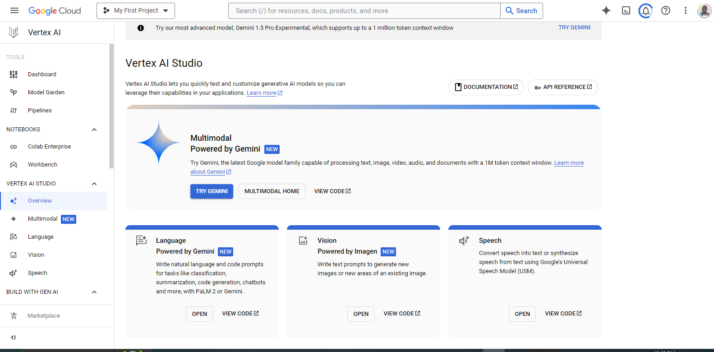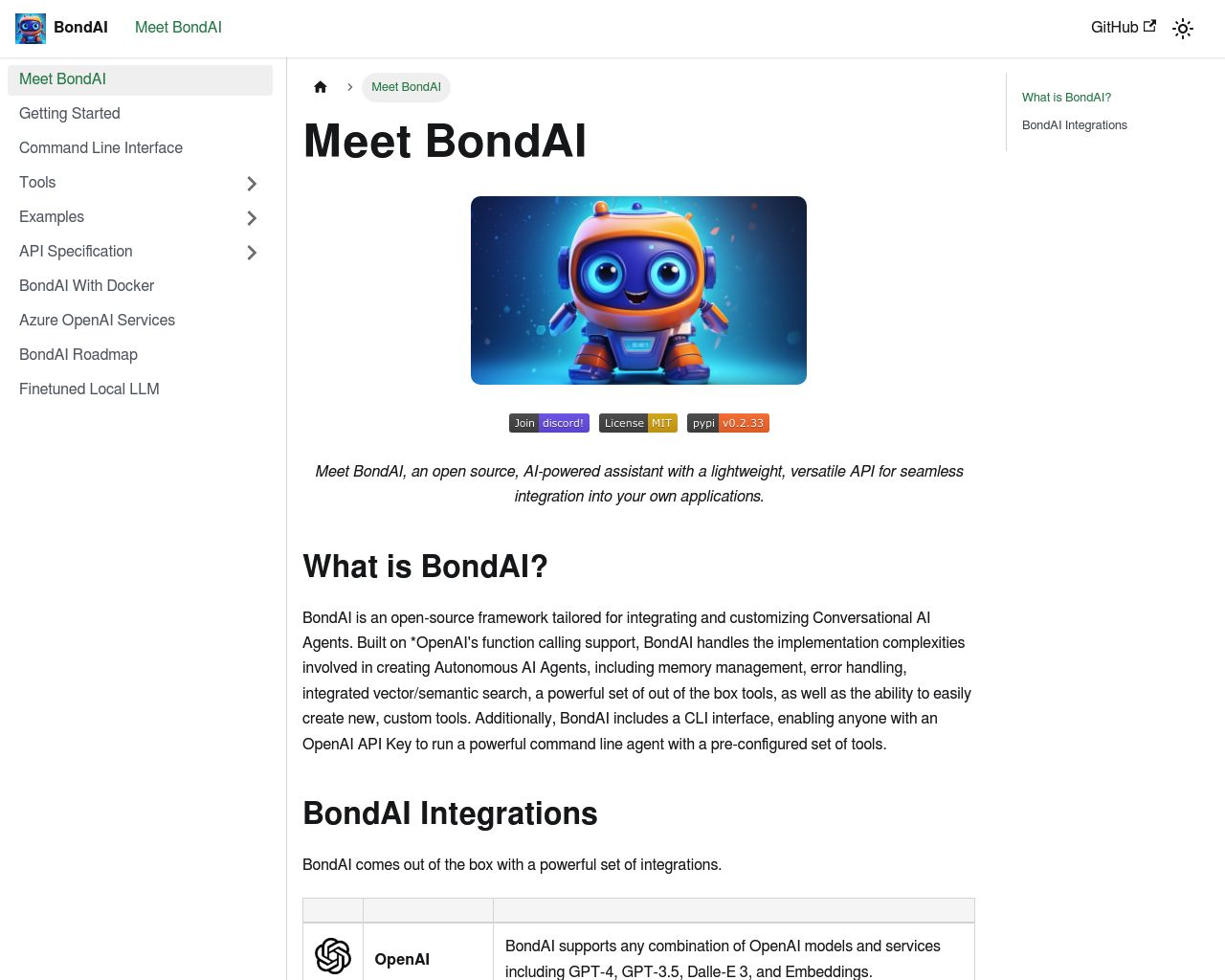Vertex AI vs. BondAI: Comparing Enterprise and Open-Source AI Platforms
AI development platforms have reshaped how organizations build and deploy intelligent solutions. Vertex AI, Google’s comprehensive machine learning platform, and BondAI, an open-source framework for AI agent systems, offer powerful tools for creating sophisticated AI applications. This comparison explores the unique strengths and limitations of each platform, examining their features, deployment options, and overall approach to AI development. We’ll also introduce SmythOS, a game-changing alternative that combines the best of both worlds while addressing key limitations. Whether you’re a seasoned developer, business leader, or AI enthusiast, this analysis will help you navigate the landscape of AI platforms and choose the solution that best fits your needs.
Vertex AI Overview
Vertex AI delivers a comprehensive machine learning platform for developing and deploying AI models at scale. Google’s flagship AI offering integrates powerful tools for data preparation, model training, and production deployment, enabling organizations to build sophisticated AI solutions efficiently.


Vertex AI’s standout feature is its support for advanced generative AI models like Gemini. These models process multiple input types—text, images, audio, and video—opening up possibilities for creating versatile AI agents and applications. The platform’s Model Garden provides access to a variety of pre-trained models, including Google’s proprietary offerings and select open-source options, streamlining the development process for AI teams.
Vertex AI’s standout feature is its support for advanced generative AI models like Gemini. These models process multiple input types—text, images, audio, and video—opening up possibilities for creating versatile AI agents and applications.
The platform excels in MLOps capabilities, offering robust tools for model versioning, monitoring, and workflow orchestration. This focus on operational excellence helps organizations manage the entire lifecycle of their AI models effectively. Vertex AI also prioritizes customization, allowing users to fine-tune models to specific use cases, potentially improving performance and reducing costs.
While Vertex AI provides a powerful suite of tools, it requires a certain level of technical expertise to fully utilize. The platform lacks a true no-code editor, which may present a barrier for non-technical users looking to develop AI solutions. Additionally, as part of the Google Cloud ecosystem, users need to consider potential lock-in effects when integrating Vertex AI into their existing infrastructure.
Vertex AI positions itself as a scalable, enterprise-grade solution in the competitive AI platform landscape. Its strengths lie in its comprehensive feature set, integration with Google Cloud services, and support for cutting-edge AI technologies. However, organizations should weigh these benefits against their specific needs, technical capabilities, and long-term AI strategy when considering Vertex AI as their platform of choice.
BondAI Overview
BondAI offers an open-source framework for developing advanced AI Agent Systems. The platform simplifies complex tasks in creating autonomous AI agents, including memory management, error handling, and semantic search capabilities.


BondAI integrates cutting-edge AI architectures like ReAct Agents and ConversationalAgents, enabling both individual interactions and multi-agent systems. This versatility allows AI agents to collaborate on complex tasks, surpassing single-agent model capabilities.
BondAI integrates cutting-edge AI architectures … enabling both individual interactions and multi-agent systems. This versatility allows AI agents to collaborate on complex tasks, surpassing single-agent model capabilities.
The framework seamlessly integrates with popular services including OpenAI models, Microsoft Azure, Google Search, and LangChain. This extensive integration empowers developers to create AI solutions for diverse applications, from research and trading to home automation and customer support.
A standout feature of BondAI is its robust memory management system, inspired by the MemGPT paper. The tiered approach, consisting of core memory, conversation memory, and archival memory, enables efficient information management and retrieval, enhancing problem-solving capabilities.
BondAI’s flexibility shines through its deployment options. Users can leverage the platform via a Command Line Interface, Docker containers, or direct integration into codebases. This adaptability allows for quick starts with pre-configured tools or custom agent development, catering to a wide range of user needs and technical expertise levels.
Feature Comparison
Vertex AI and BondAI offer distinct approaches to AI development, each with unique strengths and limitations. Vertex AI excels in enterprise-grade machine learning, providing a comprehensive platform for model training, deployment, and management. Its standout features include support for advanced generative AI models like Gemini, which enable multimodal processing of text, images, audio, and video. Vertex AI’s Model Garden and robust MLOps capabilities streamline the development process and facilitate effective model lifecycle management.
BondAI, as an open-source framework, focuses on simplifying the creation of autonomous AI agents. It shines in areas like memory management, offering a tiered approach inspired by the MemGPT paper for efficient information handling. BondAI’s integration of cutting-edge AI architectures like ReAct Agents and ConversationalAgents enables both individual interactions and multi-agent collaborations, surpassing single-agent model capabilities in complex task solving.
While Vertex AI provides powerful tools for enterprise AI development, it lacks a true no-code editor, potentially limiting accessibility for non-technical users. BondAI, on the other hand, offers more flexibility in deployment options, including CLI and Docker containers, catering to a wider range of technical expertise levels. However, BondAI may not match Vertex AI’s enterprise-grade scalability and integration with Google Cloud services.
Feature Comparison Table
| Vertex AI | BondAI | SmythOS | |
|---|---|---|---|
| CORE FEATURES | |||
| Visual Builder | ✅ | ❌ | ✅ |
| No-Code Options | ❌ | ❌ | ✅ |
| Audit Logs for Analytics | ❌ | ❌ | ✅ |
| SECURITY | |||
| Constrained Alignment | ✅ | ❌ | ✅ |
| IP Control | ✅ | ❌ | ✅ |
| COMPONENTS | |||
| Huggingface AIs | ❌ | ✅ | ✅ |
| Zapier APIs | ❌ | ✅ | ✅ |
| Data Lakes | ✅ | ❌ | ✅ |
| DEPLOYMENT OPTIONS (EMBODIMENTS) | |||
| Staging Domains | ✅ | ❌ | ✅ |
| Deploy as Scheduled Agent | ✅ | ❌ | ✅ |
| DATA LAKE SUPPORT | |||
| Hosted Vector Database | ✅ | ❌ | ✅ |
| Sitemap Crawler | ❌ | ❌ | ✅ |
| YouTube Transcript Crawler | ❌ | ❌ | ✅ |
Best Alternative to Vertex AI and BondAI
SmythOS emerges as the superior alternative to Vertex AI and BondAI, offering a comprehensive platform for AI agent development and deployment. We combine the best of both worlds: enterprise-grade capabilities and user-friendly design.
Our visual builder and no-code options democratize AI development, allowing users of all skill levels to create sophisticated agents without extensive programming knowledge. This accessibility sets us apart from Vertex AI’s more technical approach and BondAI’s command-line interface.
SmythOS excels in versatility, supporting a wide range of AI models and integrations. Unlike Vertex AI’s focus on Google’s ecosystem, we offer seamless integration with various AI providers…
SmythOS excels in versatility, supporting a wide range of AI models and integrations. Unlike Vertex AI’s focus on Google’s ecosystem, we offer seamless integration with various AI providers, including Hugging Face and OpenAI. Our platform also surpasses BondAI in scalability and enterprise-ready features, making it ideal for businesses of all sizes.
We pride ourselves on our advanced deployment options. SmythOS allows you to deploy agents as APIs, webhooks, scheduled tasks, or chatbots, providing flexibility that neither Vertex AI nor BondAI can match. Our staging and production environments ensure smooth development and rollout processes, a feature notably absent in BondAI.
In terms of data handling, SmythOS offers unparalleled capabilities. Our hosted vector database, coupled with support for various data sources like sitemaps, YouTube transcripts, and multiple file formats, provides a robust foundation for AI agent development. These features, combined with our commitment to security and scalability, make SmythOS the ultimate choice for organizations looking to harness the full potential of AI automation.
Conclusion
Vertex AI, BondAI, and SmythOS each offer unique approaches to AI development and deployment. Vertex AI excels in enterprise-grade machine learning with its comprehensive platform and advanced generative AI models like Gemini. BondAI stands out as an open-source framework for creating autonomous AI agents, featuring robust memory management and multi-agent collaboration capabilities. However, SmythOS emerges as the superior choice, combining the strengths of both platforms while addressing their limitations.
SmythOS revolutionizes AI agent creation with its intuitive drag-and-drop interface, extensive integration ecosystem, and versatile deployment options. Unlike Vertex AI, which lacks a true no-code editor, SmythOS democratizes AI development, making it accessible to both technical and non-technical users. While BondAI offers flexibility, SmythOS takes it further by providing pre-built API integrations, templates, and support for a vast array of AI models from different providers.
The platform’s ability to create multi-agent systems, coupled with its comprehensive feature set including visual builders, debug modes, and advanced security measures, positions SmythOS as a game-changer in the AI development landscape. Its ’Create Once, Deploy Anywhere’ approach allows for seamless integration across various platforms, from ChatGPT plugins to Alexa skills, offering unparalleled versatility.
For those looking to harness the full potential of AI in their workflows, SmythOS offers a compelling solution. We invite you to explore our diverse range of AI-powered agent templates and experience firsthand how SmythOS can transform your AI development process. Create a free SmythOS account today and join the AI revolution, where building sophisticated AI agents is not just possible, but remarkably straightforward and efficient.
Last updated:
Disclaimer: The information presented in this article is for general informational purposes only and is provided as is. While we strive to keep the content up-to-date and accurate, we make no representations or warranties of any kind, express or implied, about the completeness, accuracy, reliability, suitability, or availability of the information contained in this article.
Any reliance you place on such information is strictly at your own risk. We reserve the right to make additions, deletions, or modifications to the contents of this article at any time without prior notice.
In no event will we be liable for any loss or damage including without limitation, indirect or consequential loss or damage, or any loss or damage whatsoever arising from loss of data, profits, or any other loss not specified herein arising out of, or in connection with, the use of this article.
Despite our best efforts, this article may contain oversights, errors, or omissions. If you notice any inaccuracies or have concerns about the content, please report them through our content feedback form. Your input helps us maintain the quality and reliability of our information.
